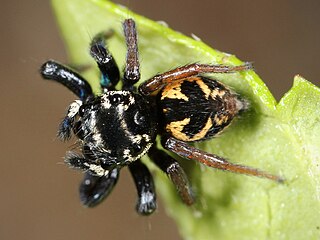
Corythalia is a genus of jumping spiders that was first described by Carl Ludwig Koch in 1850. The genus is distributed throughout most of the Western Hemisphere.

Metaphidippus is a genus of jumping spiders that was first described by Frederick Octavius Pickard-Cambridge in 1901. The name is combined from Ancient Greek μετά "after, beside" and the salticid genus Phidippus.

Phanias is a genus of jumping spiders that was first described by Frederick Octavius Pickard-Cambridge in 1901. They are similar to members of Marpissa, but have three pairs of spines beneath the first tibia.
Sidusa is a genus of jumping spiders that was first described by George and Elizabeth Peckham in 1895.

Castianeira is a genus of ant-like corinnid sac spiders first described by Eugen von Keyserling in 1879. They are found in Eurasia, Africa, and the Americas, but are absent from Australia. Twenty-six species are native to North America, and at least twice as many are native to Mexico and Central America.

Lycosa is a genus of wolf spiders distributed throughout most of the world. Sometimes called the "true tarantula", though not closely related to the spiders most commonly called tarantulas today, Lycosa spp. can be distinguished from common wolf spiders by their relatively large size. This genus includes the European Lycosa tarantula, which was once associated with tarantism, a dubious affliction whose symptoms included shaking, cold sweats, and a high fever, asserted to be curable only by the traditional tarantella dance. No scientific substantiation of that myth is known; the venom of Lycosa spiders is generally not harmful.

Hogna is a genus of wolf spiders with more than 200 described species. It is found on all continents except Antarctica.

Metepeira is a genus of orb-weaver spiders first described by F. O. Pickard-Cambridge in 1903. The name is derived from the Ancient Greek μετά and the obsolete genus name Epeira, denoting a genus similar to Epeira.
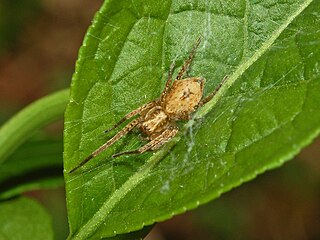
Anyphaena is a genus of anyphaenid sac spiders first described by Carl Jakob Sundevall in 1833.
Melpomene is a genus of funnel weavers first described by O. Pickard-Cambridge in 1898. They range from southwestern U.S. to Panama and can grow up to 7 to 8.5 millimetres long. Roth and Brame noted that, with many undescribed species, the genus appears to be a catchall or "wastebasket taxon" for several unrelated species that may represent several genera.
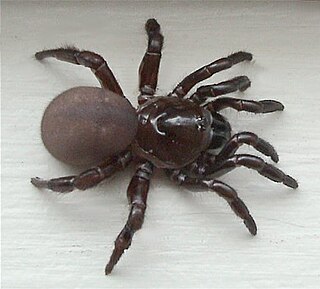
Ummidia is a genus of mygalomorph spiders in the family Halonoproctidae, and was first described by Tamerlan Thorell in 1875.
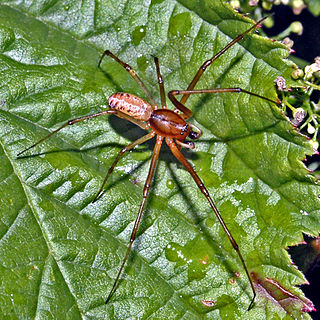
Linyphia is a genus of dwarf spiders that was first described by Pierre André Latreille in 1804. The name is Greek, and means "thread-weaver" or "linen maker".
Rualena is a genus of North American funnel weavers first described by R. V. Chamberlin & Wilton Ivie in 1942.

Elaver is a genus of sac spiders first described by Octavius Pickard-Cambridge in 1898.

Trachelas is a genus of araneomorph spiders originally placed with the Trachelidae, and later moved to the Corinnidae.

Eustala is a genus of orb-weaver spiders first described by Eugène Simon in 1895.
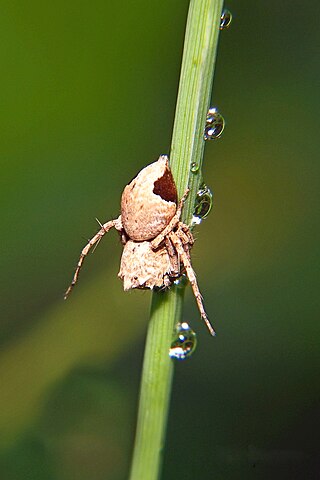
Hamataliwa is a genus of lynx spiders that was first described by Eugen von Keyserling in 1887.














